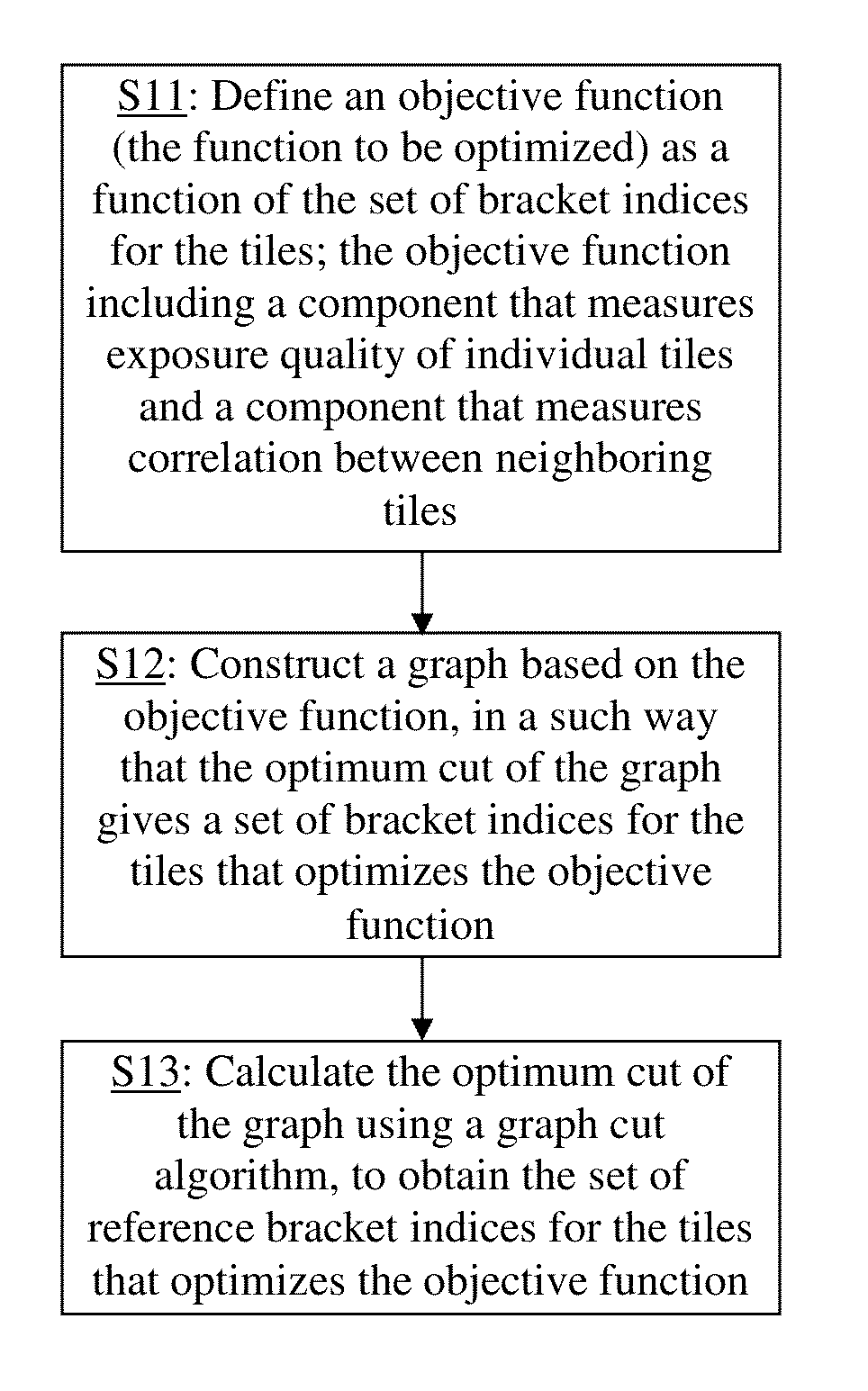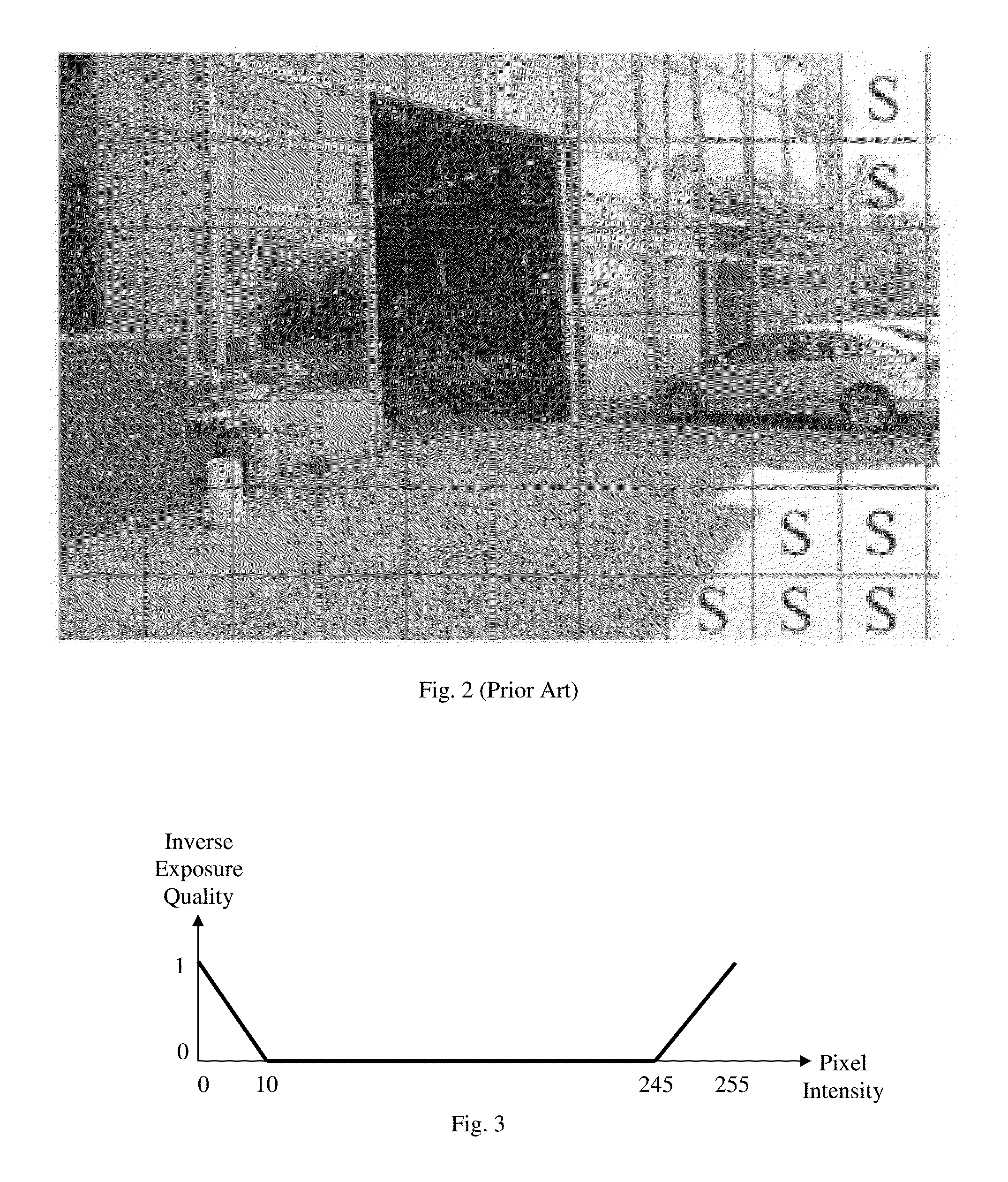Ghost artifact detection and removal in hdr image creation using graph based selection of local reference
a ghost artifact and local reference technology, applied in image enhancement, instruments, television systems, etc., can solve the problems of overexposure with details lost, inability to adequately image such scenes, and often underexposure of dark areas with details los
- Summary
- Abstract
- Description
- Claims
- Application Information
AI Technical Summary
Benefits of technology
Problems solved by technology
Method used
Image
Examples
Embodiment Construction
[0028]Embodiments of the present invention provide a method for detecting ghost artifact in multiple images for HDR image creation. The multiple images (brackets) are obtained by photographing the same scene at different exposure levels. It is assumed that the camera does not move substantially during the photographing process; however, objects may move within the scene, or appear into or disappear from the scene during the process. Such objects are collectively referred to as moving objects or ghost-inducing objects in this disclosure. If untreated, the moving objects will induce ghost artifact in the resulting HDR image. The ghost artifact detection method identifies areas of the images that contain such moving objects that may induce ghost artifact. It should be noted that although the method is referred to as a ghost artifact detection method, it does not detects ghost artifacts in an HDR image after it has been created. Rather, the method detects regions in the original multipl...
PUM
 Login to View More
Login to View More Abstract
Description
Claims
Application Information
 Login to View More
Login to View More - R&D
- Intellectual Property
- Life Sciences
- Materials
- Tech Scout
- Unparalleled Data Quality
- Higher Quality Content
- 60% Fewer Hallucinations
Browse by: Latest US Patents, China's latest patents, Technical Efficacy Thesaurus, Application Domain, Technology Topic, Popular Technical Reports.
© 2025 PatSnap. All rights reserved.Legal|Privacy policy|Modern Slavery Act Transparency Statement|Sitemap|About US| Contact US: help@patsnap.com



